Key:
Needles in A (Non-Working Position)
Needles in B (Working Position)
Needles in D (Upper Working Position)
Needles in E (Holding Position)
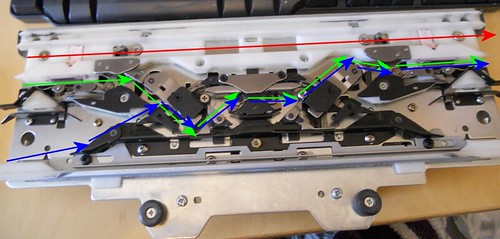
This is the underside of the carriage set for N or stocking stitch. Note that any needle in HOLD (the blue line) will knit back.
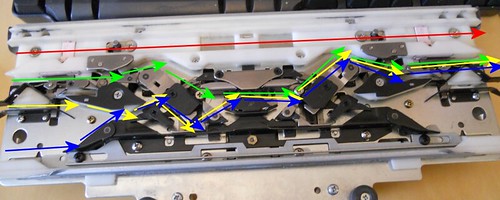
This is the carriage set to tuck - note that needles in B don't move out as far (ie they tuck). Needles in D and E position knit.
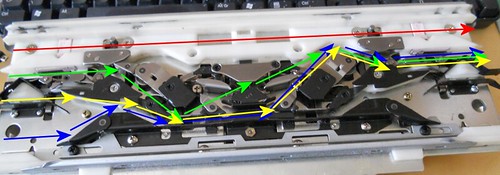
This is the carriage set for fair-isle. Needles in B position take a slightly shorter route and knit the yarn in feeder A. Needles in D or E position knit the yarn in feeder B.

This is the carriage set for punch lace - this is a very similar set-up to the fairisle one. Only later machines have this function. Both yarns knit together in certain areas, and the second yarn only knits in other areas.
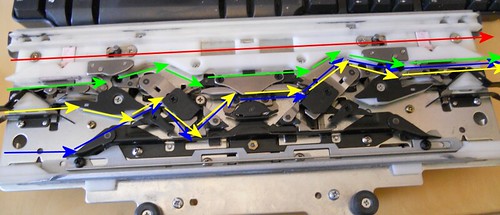
This is the carriage set to slip - needles in B position hardly move and therefore do not knit.
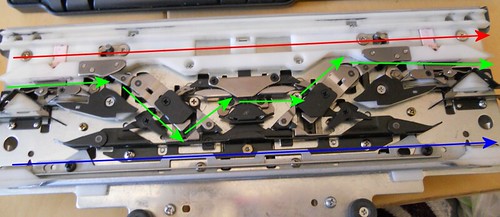
This is the carriage set to hold - any needle in E position will remain in E position.
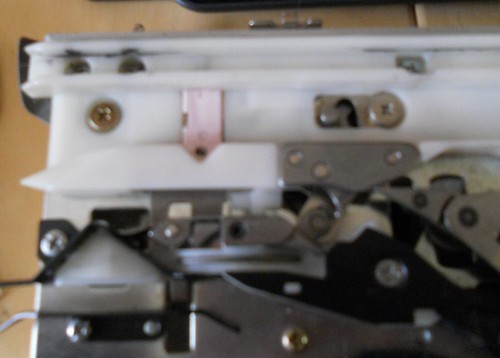
This is the carriage in N position. Note also the pink plastic part - this is the end needle selection cam. It's not always pink though, sometimes it is yellow.
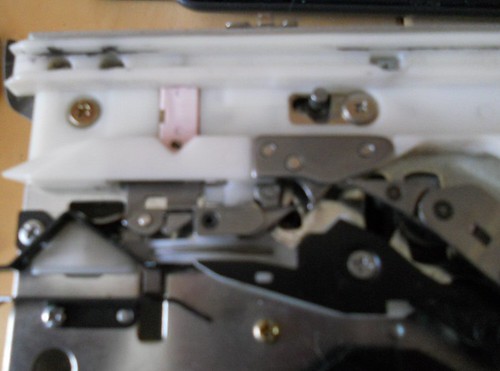
This is the carriage in KC (Knitting Card) position

This is the carriage in SM (Single Motif) position - not available on all machines.

1 comment:
This is utterly BRILLIANT!!! I took tons of photos of the underside of my Brother 588 carriage in order to do just what you've done. Your graphics are beyond excellent. It's a huge challenge to show paths in all the different carriage settings for all the different needle positions, but you have nailed it!
Well done, and thank you.
Post a Comment